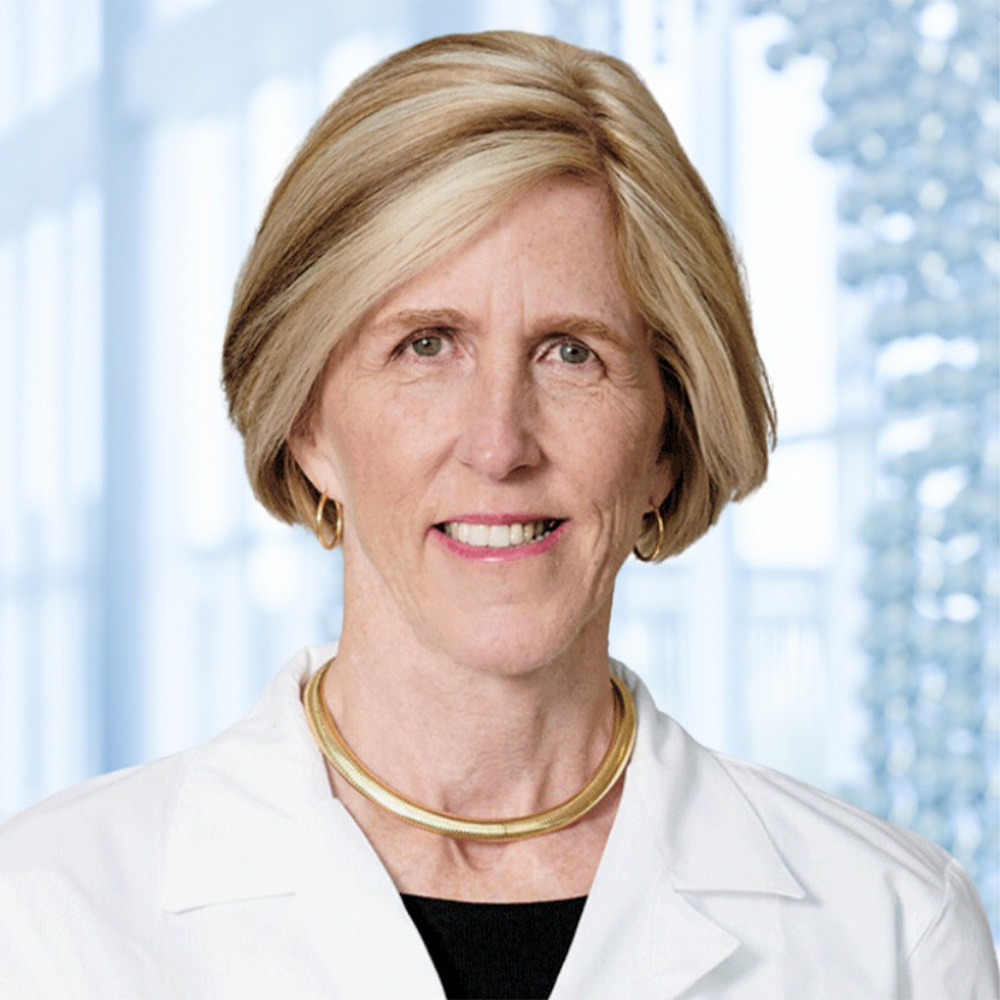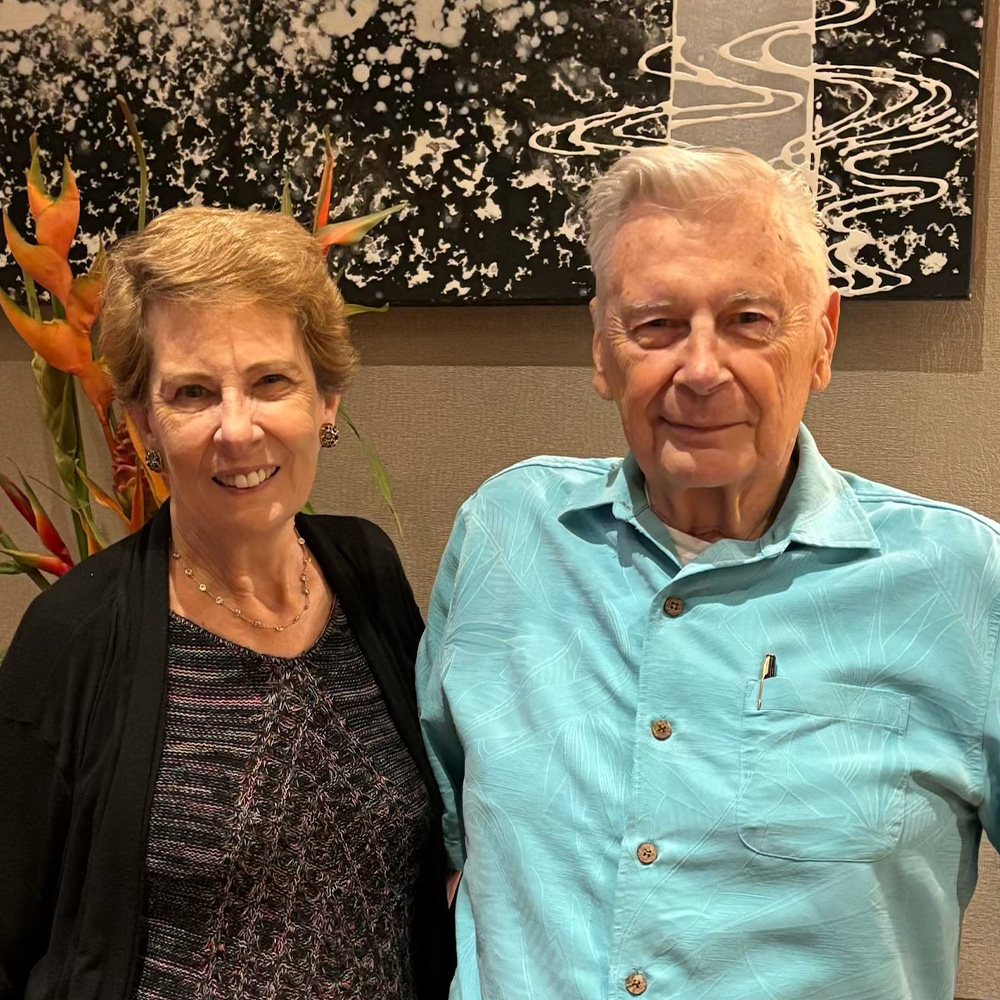At 25, the Dallas Heart Study is shaping cardiac care and exploring links to brain health

DALLAS – August 25, 2025 – The vision was ambitious: Persuade thousands of Dallas County residents to participate in a long-term study to investigate heart health.
The logistics were challenging: Go door-to-door to sign up participants and build a diverse cohort, eventually collecting medical histories, bloodwork, and physical measurements, and running participants through a battery of advanced imaging tests using the most sophisticated equipment available.
The results, captured and compiled over two decades at UT Southwestern Medical Center, have been life-altering.
In this video, James de Lemos, M.D., Chief of the Division of Cardiology at UTSW and a key driver of the DHS, and Amil Shah, M.D., Director of the study's current phase, called the Dallas Hearts and Minds Study, discuss the evolution and impact of this transformational research.
Twenty-five years since its inception, the Dallas Heart Study (DHS) is recognized as one of the leading population-based studies of heart health in the U.S. It has spawned more than 230 research papers and produced major findings that have guided advancements in how cardiovascular disease, hypertension, and heart failure are treated.
Among the top breakthroughs, researchers discovered a gene mutation linked to very low levels of LDL, or bad cholesterol, leading to a new class of drugs to help people who are unable to control their cholesterol levels with statins.
“The Dallas Heart Study has had a tremendous impact nationally and internationally on the way we understand heart disease,” said James de Lemos, M.D., Professor of Internal Medicine and Chief of the Division of Cardiology at UT Southwestern, and one of the study’s principal investigators.
“The DHS has really been ahead of its time,” added Amil Shah, M.D., Professor of Internal Medicine in the Division of Cardiology, who was recruited to UT Southwestern from Harvard Medical School in 2023 to take over as the study’s Director. “The founders were thinking about metabolic dysfunction, ectopic fat, and all of the most relevant drivers of cardiovascular disease before they really hit the mainstream.”
Now in its third phase, the DHS is expanding its reach to explore the brain as well as the heart. The newest round of research, called the Dallas Hearts and Minds Study, will examine the impact of aging on the cohort, which has collectively grown older. About 1,500 participants have been enrolled in the new phase and are undergoing a series of evaluations and tests including cardiac ultrasounds, both at rest and during exercise; cardiopulmonary exercise tests; brain MRIs; full-body MRIs to quantify body fat and its location; and magnetoencephalography (MEG), which maps brain activity. Additionally, participants are being assessed for cognitive ability as well as pain and subtypes of pain during physical activity.
An interdisciplinary team of about a dozen co-investigators will analyze the data and produce a series of papers documenting the findings of the initial testing over the next year. Researchers will then be able to tap into the data and use the cohort to investigate high-profile topics including obesity, diabetes, heart failure, and dementia.
“The future of cardiovascular research, particularly at UT Southwestern, is incredibly bright,” said Dr. de Lemos. “The DHS and now the Dallas Hearts and Minds Study provide a pathway for how collaborative teams can work together to address health challenges as people get older.”
Taking on the No. 1 killer
Heart disease is the No. 1 cause of death in the United States and globally, outpacing all forms of cancer and accidental deaths. In Dallas County, mortality is even more pronounced among Black men and women. In 2000, leaders at UT Southwestern found an intriguing opportunity to address this community problem.
The Donald W. Reynolds Foundation, an Oklahoma-based philanthropic organization, had put out a request for proposals for a highly integrated research center to study heart disease; the winning institution would receive $6 million a year for four years, with the chance to extend the grant to a total of 10 years.

At the urging of then-Chief of Cardiology R. Sanders Williams, M.D., researchers led by Helen Hobbs, M.D., Professor of Internal Medicine in UTSW's Eugene McDermott Center for Human Growth and Development, and the late Ronald Victor, M.D., an expert in hypertension, drafted a proposal that would take advantage of Dallas County’s diverse population and UT Southwestern’s innovative approach to research, incorporating new technologies and multidisciplinary teams. From 49 institutions that submitted applications, UT Southwestern was named one of three finalists, and ultimately selected for the grant over proposals from Johns Hopkins and Stanford.
The Dallas Heart Study was born.
At the time, UT Southwestern was well known for its excellence in basic science, including discoveries that led to major advances in heart health. In 1985, Michael Brown, M.D., and Joseph Goldstein, M.D., were awarded the Nobel Prize in Physiology or Medicine for their discovery of the LDL receptor and its role in cholesterol regulation. Their findings led to the development of statin drugs, which revolutionized cardiac preventive care.
But UT Southwestern scientists had never led a population-based study. Dr. Hobbs, who trained in the Brown & Goldstein Lab, saw the Dallas Heart Study as a chance to blend UTSW’s scientific expertise with clinical research to address a major community problem.
Initially, the DHS set out to study two diseases: atherosclerosis, or the buildup of plaque in arteries that leads to heart disease, and hypertension, which can lead to heart failure. The cohort would need to have the breadth to identify both the prevalence of disease in the community and the genetic factors present in the population.
“We wanted the study to be large and representative and we wanted to be able to probe the mechanism of disease using genetics and hospital-based sub-studies,” said Dr. Hobbs.
More than 6,000 residents between the ages of 35 and 55 were signed up, targeted in select ZIP codes based on their demographic makeup. To reflect the genetic diversity of the Dallas community, the cohort was weighted heavily with Black participants; about 52% were African American, 17% Hispanic, and 29% white, with the balance from other ethnicities.
Participants first received home visits, where they provided medical and family histories and researchers gathered physical measurements, blood pressure, and blood and urine samples. Then about 3,500 participants came into the clinic at UTSW to receive cardiac MRIs and CT scans, abdominal imaging, and bone density scans. This produced a wealth of data including levels of lipoproteins, body fat distribution, liver fat content, insulin resistance, measures of plaque buildup in the arteries of the heart, and left ventricular mass and function measurements. Blood was banked for measurement of biomarkers, and genomic DNA was isolated from the blood for genetic profiling. So, the database provided researchers with both genotype and phenotype information.
The level of imaging was ahead of its time for such a broad-based study.
“It was like ‘Star Wars’ to do MRIs of the heart in more than 3,000 people at that time, and to do this level of biomarker collection, and CT scans,” said Dr. de Lemos.
In 2008, about 3,000 participants came back to have another round of imaging and about 1,000 new members were added to the cohort. The latest iteration, conducted over the last three years, has shifted the focus to late-life issues, such as cognition, since participants are now all over 55, with some approaching 80.
‘A sense of relief’

Eleanor Bergeron, 78, said she signed up for the initial study after someone from UTSW knocked on her door in Duncanville. She thought it was a good opportunity and, for the past 25 years, she has provided annual assessments of her health and come to UTSW for periodic testing. About a year and a half ago, she had brain scans for the Dallas Hearts and Minds Study and was scheduled for heart imaging.
Her husband, Dennis, joined the study several years later, when he became involved in research investigating the impact of exercise on the heart. He ran on a treadmill and underwent cardiac catheterization, where he watched his heartbeat on a monitor.
Fortunately, the testing hasn’t revealed any cardiac problems for either of them. But they say being part of a medical study has been meaningful.
“What it did for me was made me want to exercise more,” said Mr. Bergeron, 80. “It has been a positive experience. What they’re doing is pretty extensive.”

Leo Fair, 63, who works in aircraft maintenance for Southwest Airlines, joined in 2009 after learning about the study from his sister, who was already involved. He said their mother died of a heart attack when she was 50, so he saw the study as an opportunity to prevent history from repeating for his family.
“My heart was good, and I was happy to know that,” he said. “It gave me a sense of relief.”
Mr. Fair has remained in the study even after moving to Florida in 2015, and he returns to Dallas periodically for testing – most recently a full-body MRI about a year and a half ago. It gives him peace of mind to confirm that he doesn’t have a heart condition and a sense of purpose knowing he’s helping other people.
“That’s a treasure,” he said.
Gene mutations and barbershops
The first round of testing yielded information that led to major breakthroughs for treating both atherosclerosis and hypertension.
Dr. Hobbs, working with her research colleague Jonathan Cohen, Ph.D., Professor in the Eugene McDermott Center for Human Growth and Development, found that study participants with very low levels of LDL carried mutations in the PCSK9 gene. Two percent of African Americans in the study had a PCSK9 mutation, which correlated with a markedly lower cholesterol level.

They subsequently found a woman with two different PCSK9 mutations, one from each parent, who had extremely low levels of LDL but suffered no ill effects. They hypothesized that if the gene could be inhibited, it would lower LDL in others. This finding ultimately led to the development of a new class of drugs that simulate this genetic mutation by inhibiting the function of PCSK9, approved by the Food and Drug Administration in 2015.
Dr. Hobbs’ research earned her the 2016 Breakthrough Prize in Life Sciences and paved the way for the development of a new strategy to prevent heart disease.
“This type of finding is really the jewel in the crown of what these cohorts are designed to be able to do, and it’s impressive that the DHS is relatively unique in its achievement of that,” Dr. Shah said. “In less than two decades, to move from this fundamental discovery to clinical translation to having an entire class of drugs to allow high-risk patients to live healthier lives, is as rich a success story as one could hope for.”
The DHS data also showed that 27% of Black men, a group with the greatest risk of heart disease, had hypertension but most were not being treated. Recognizing that many men did not regularly visit a doctor, Dr. Victor came up with a community intervention plan to reach the population where they live. UTSW researchers organized a pilot study in barbershops, a popular gathering spot for Black men. UTSW medical students took blood pressure readings on customers and passed reports on to their doctors. Patients who were eventually treated showed significant reductions in blood pressure, a development that likely translated into many saved lives.
The barbershop community outreach strategy has become a national intervention and has been adapted to other awareness programs, such as screenings for diabetes and prostate cancer.
Over the years, other significant findings from DHS research would lead to new ways to diagnose and prevent heart disease, including:
- How moderate lowering of cholesterol beginning at a young age is a much more powerful way to prevent heart disease than waiting until middle age or later to begin treatment.
- How the location and distribution of body fat affects the likelihood of developing diabetes and heart disease.
- Identification of easily measured blood tests that can predict the probability of developing heart disease or dying from cardiac causes, even among patients who are not symptomatic.
Positioned for the future
Dr. Shah said the sustained success of the Dallas Heart Study over 25 years can be attributed to a number of factors.
Being a single-center study focused on Dallas has allowed it to be nimble, allowing for quicker decisions and adjustments to changing environments. For example, COVID-19 emerged just as researchers were signing up participants for the Dallas Hearts and Minds Study, causing a two-year delay in recruitment. Study organizers effectively pivoted to recruiting participants by phone, gathering medical histories and other basic information remotely. Researchers now are also experimenting with wearable technologies to monitor conditions remotely, such as a patch that can take electrocardiograms to assess heart rate and electrical activity.
“The DHS has really embraced new technologies,” Dr. Shah said, “particularly in engaging with our participants.”
The volume of high-quality imaging has also been innovative. Very few studies provide the level of detail of the heart and body captured by the DHS, Dr. Shah said. That emphasis on utilizing the latest technology will continue in the current phase with testing in the MEG facility, which will produce one of the nation’s largest brain-mapping datasets using this sophisticated, noninvasive technology. UTSW is a Center of Excellence for MEG technology.
Another strength has been the diversity of the cohort, which has allowed researchers to investigate health disparities that have resulted in higher rates of heart disease, at younger ages, in Black men and women. Because of the long-term nature of the study and its relationship with participants, researchers have been able to collect data on subclinical changes and social determinants of health, which could lead to better health in the community, Dr. Shah said.
“Leveraging diversity, both to study the cohort and to gain novel biological insights, has been one of the hallmarks of the Dallas Heart Study,” Dr. Shah said. “The phenomena we observe here have direct implications for Dallas and could extend to similar populations in Texas and beyond.”
Moving forward, study leaders want to develop a participant advisory panel to better understand how they feel about being involved in the study and how it can improve their physical and mental health.
Internally, the Dallas Heart Study has accelerated clinical research at UT Southwestern and elevated the Division of Cardiology by attracting a team of highly talented physician-scientists who wanted to be involved in the research, said Dr. de Lemos, who himself was lured back to UT Southwestern from Harvard 25 years ago by the promise of the DHS.
“It’s almost hard to overstate how important this study has been to the evolution of cardiology at UT Southwestern,” Dr. de Lemos said.
“It has transformed the entire institution from a clinical science standpoint, because it is so collaborative and creates so many opportunities for young people to launch their scientific careers,” he said. “The story of cardiology at UTSW in 2025 is really the story of the Dallas Heart Study because so many people have built their academic careers from this study and are now internationally known scientists.”
From his perspective, Mr. Fair said participating in the Dallas Heart Study has been very meaningful and he hopes it continues for another 25 years.
“There’s a lot of sickness in this world,” he said. “I’m happy to play my part because I know some good is coming out of it. Working together, we’re saving someone’s life.”
Dr. Brown, a Regental Professor, holds the Paul J. Thomas Chair in Medicine and The W.A. (Monty) Moncrief Distinguished Chair in Cholesterol and Arteriosclerosis Research. Dr. Goldstein, a Regental Professor, holds the Julie and Louis A. Beecherl, Jr. Distinguished Chair in Biomedical Research and the Paul J. Thomas Chair in Medicine.
Dr. Cohen holds the C. Vincent Prothro Distinguished Chair in Human Nutrition Research.
Dr. De Lemos holds the Sweetheart Ball - Kern Wildenthal, M.D., Ph.D., Distinguished Chair in Cardiology.
Dr. Hobbs holds the 1995 Dallas Heart Ball Chair in Cardiology Research.
Dr. Shah holds the Dallas Heart Ball Chair in Cardiac Research.
